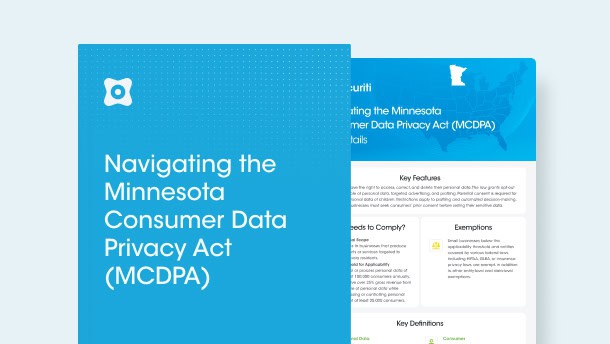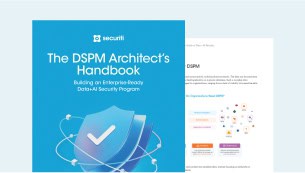1. Discover and Catalog AI Systems
Discovering and cataloging AI systems is often a major challenge for governance teams, as many tools operate invisibly across business functions, including shadow AI and embedded capabilities within SaaS platforms. Traditional methods like spreadsheets and manual audits create inefficiencies, duplication, and blind spots, leaving organizations vulnerable to compliance risks under the EU AI Act.
Securiti’s Data + AI Command Center simplifies this process by automating the discovery and cataloging of AI systems. It identifies both sanctioned and unsanctioned AI tools, consolidates all data into a central repository, and provides actionable insights to map systems to risk tiers—prohibited, high-risk, general-purpose, or low-risk—ensuring compliance with Articles 5 and 6.
By gaining complete visibility, organizations can reduce manual errors, uncover hidden AI systems, and streamline compliance efforts. This foundational step not only ensures regulatory compliance but also builds trust and promotes ethical AI practices.
2. Assess and Evaluate AI Risks
After identifying high-risk AI systems, organizations face the complex challenge of evaluating risks such as bias, toxicity, security vulnerabilities, and misinformation. These risks, if unchecked, can lead to non-compliance, reputational damage, and harmful outcomes in critical areas like health and safety. Manual methods like spreadsheets and assessments are time-consuming and prone to errors, making them unsuitable for the dynamic nature of AI systems.
Securiti addresses these challenges with its unified solution, which automates AI risk evaluation by leveraging model cards and industry benchmarks to assess critical factors such as bias, toxicity, and efficiency. Additionally, it scans for data risks like misconfigurations and unencrypted sensitive data, ensuring robust safeguards, thereby improving Data Security Posture Management (DSPM). By combining automated insights with proactive risk findings, Securiti enables organizations to conduct comprehensive risk evaluations, enhance compliance with the EU AI Act, and ensure the ethical and secure deployment of AI systems.
3. Evaluate and Manage Data Quality
Managing data quality is essential for building ethical and compliant AI systems, yet organizations face significant hurdles, including biased datasets, redundant or outdated information, and the complexity of managing structured and unstructured data across environments. Poor data quality not only jeopardizes compliance with Article 10 of the EU AI Act but also leads to unreliable AI performance and operational inefficiencies.
Securiti simplifies this challenge by providing a comprehensive set of tools designed to ensure data is accurate, unbiased, and relevant. The Data Command Graph offers a multidimensional view of data, providing insights into sensitive data objects, file quality, regulatory requirements, and lineage across AI pipelines. Data validation and testing automate the evaluation of datasets for accuracy, consistency, and relevance, detecting anomalies, schema mismatches, and incomplete records. In addition, it minimizes redundant, obsolete, and trivial data (ROT), improving AI system efficiency while reducing storage costs.
With Securiti, organizations can confidently align with Article 10 requirements, ensuring that high-quality data powers their AI systems. This comprehensive approach streamlines compliance, enhances AI reliability, and builds trust through transparent and ethical data practices.
4. Implement Data + AI Controls
Organizations face significant challenges in mitigating risks within high-risk AI systems, such as biased or malicious outputs, data poisoning, and adversarial attacks. Implementing robust controls across diverse environments, ensuring real-time visibility, and automating compliance with Article 15 of the EU AI Act are key hurdles.
Securiti simplifies risk mitigation with a unified Data + AI Command Center to enforce and manage security policies. The platform ensures sensitive data remains protected through automated data masking while access entitlements restrict unauthorized access to AI models and datasets. LLM Firewalls monitor AI prompts, responses, and RAG retrievals to prevent biased, toxic, or malicious outputs, reinforcing responsible AI deployment. Automatic remediation capabilities proactively fix security misconfigurations, such as enabling masking for sensitive data and enforcing access control policies.
Beyond control implementation, Securiti continuously monitors AI systems, providing actionable insights to detect emerging risks and maintain compliance. Real-time monitoring delivers ongoing visibility into AI system performance, while policy automation ensures security policies are consistently enforced across AI environments.
By aligning with Article 15, Securiti enables organizations to strengthen AI resilience, enhance accuracy, and secure AI operations at scale—all while reducing compliance risks and maintaining stakeholder trust.
5. Report on Compliance
Demonstrating compliance with the EU AI Act and other evolving regulatory standards is a complex and time-intensive task for governance teams, often hindered by siloed tools and outdated processes.
Securiti addresses these challenges with an automated compliance framework that simplifies testing, tracking, and reporting across multiple regulations. Its capabilities include automated compliance reporting, pre-built frameworks for standards like the EU AI Act and GDPR, real-time monitoring, and manual validation workflows for non-automatable controls. By unifying compliance efforts, Securiti helps organizations reduce risks, streamline operations, and ensure regulatory compliance efficiently and effectively.
Secure AI Systems with Automated Compliance
Securiti’s 5-step framework—from discovering AI systems to streamlining compliance reporting—provides a clear, practical path for navigating the EU AI Act. More than just a compliance roadmap, it’s an automated solution for building ethical, secure, and trustworthy AI systems that drive innovation while protecting your organization.
As AI regulations evolve, the ability to integrate governance with innovation will define industry leaders. Compliance isn’t just about meeting legal obligations—it’s an opportunity to establish leadership in ethical AI and gain a competitive edge in an increasingly regulated landscape. Trust, transparency, and accountability will shape the future of AI adoption, and Securiti is here to help you stay ahead with its AI compliance automation solution.
For an in-depth exploration of the challenges and solutions related to the EU AI Act, download our exclusive whitepaper. Packed with detailed insights and actionable strategies, it expands on the 5-step framework to help your organization confidently navigate the complexities of AI compliance.
Don’t wait until the deadlines loom closer—take action today. Explore Securiti’s solution to discover how automation and advanced governance tools can simplify your compliance journey.









































